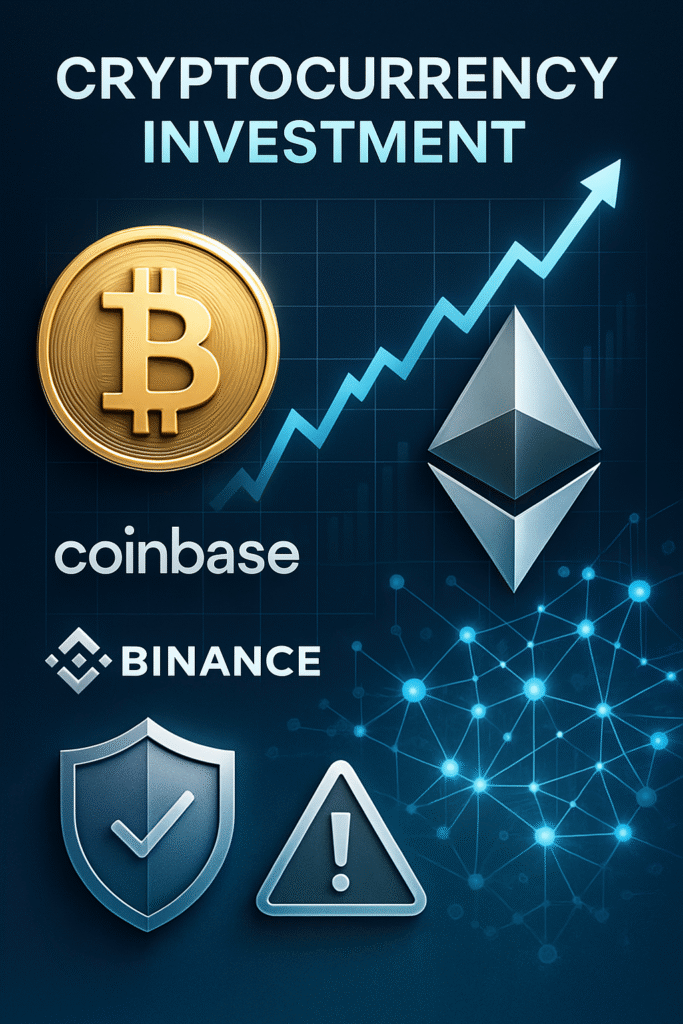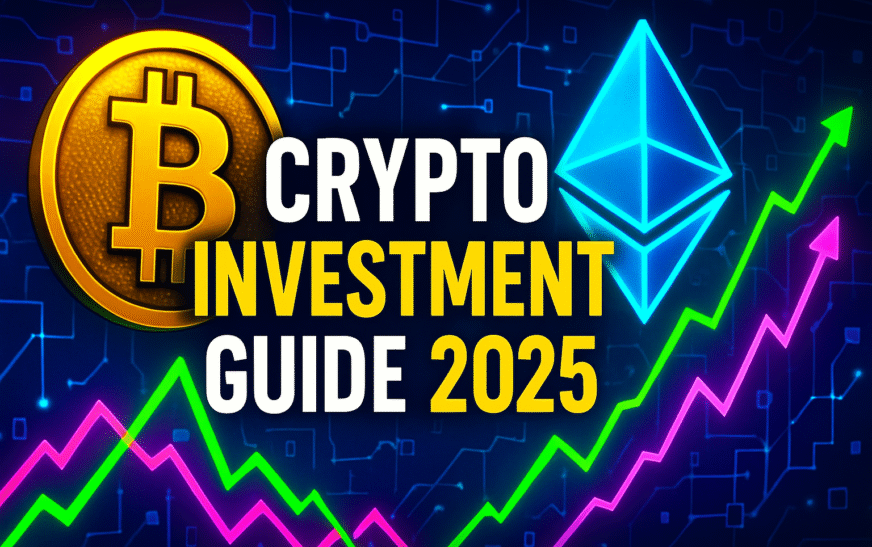The cryptocurrency market in 2025 has demonstrated remarkable resilience and growth, with Bitcoin reaching new all-time highs above $113,000 and total market capitalization exceeding $3.5 trillion. As institutional adoption accelerates and regulatory frameworks crystallize, investors face unprecedented opportunities alongside evolving risks. This comprehensive guide analyzes the most promising cryptocurrencies, effective trading strategies, and essential risk management techniques for navigating the digital asset landscape in 2025.
Executive Summary: 2025 Market Outlook
Bitcoin has surged 145% year-to-date, establishing itself as the premier digital store of value with institutional ETF inflows exceeding $100 billion. XRP leads performance metrics with 502% gains following regulatory clarity, while Ethereum maintains its DeFi dominance despite more modest 41% returns. The altcoin season index at 42 suggests capital rotation is beginning, positioning selective altcoins for significant outperformance as liquidity flows beyond Bitcoin.
Regulatory developments including the GENIUS Act for stablecoins and clear digital asset frameworks have reduced uncertainty, enabling broader institutional participation. DeFi protocols command over $52 billion in total value locked, with liquid staking and real-world asset tokenization emerging as dominant trends.

Top 15 Cryptocurrencies to Watch in 2025
Tier 1: Digital Store of Value
1. Bitcoin (BTC) – $113,083
Market Cap: $2.25 Trillion | YTD Performance: +145%
Bitcoin’s institutional adoption narrative reached maturity in 2025 with regulated ETF products facilitating $20-40 billion in institutional inflows. Goldman Sachs and Pantera Capital’s successful price predictions demonstrate the predictive power of halving cycles, with Bitcoin maintaining its four-year cyclical pattern.
Investment Thesis: Digital gold with capped supply of 21 million coins, regulatory clarity, and institutional custody infrastructure. The Trump administration’s pro-crypto stance and strategic Bitcoin reserve discussions provide additional tailwinds.
Price Predictions: Conservative target $170k-$133k, with some analysts projecting $162,353 peak before settling at $145,167.
2. Ethereum (ETH) – $4,262.84
Market Cap: $514.54 Billion | YTD Performance: +41%
Ethereum’s proof-of-stake transition and smart contract dominance maintain its position as the backbone of DeFi and NFT ecosystems. Liquid staking protocols like Lido control $27.5 billion in staked ETH, generating 3.2-4.1% APY for holders.
Investment Thesis: Smart contract platform leadership, DeFi infrastructure, and upcoming network upgrades. The Ethereum 2.0 roadmap continues improving scalability and efficiency.
Tier 2: High-Performance Blockchains
3. Solana (SOL) – $184.30
Market Cap: $99.27 Billion | YTD Performance: +145%
Solana’s high-throughput architecture supporting 6,500+ transactions per second positions it as Ethereum’s primary competitor. DeFi and NFT adoption drives ecosystem growth, while institutional partnerships expand utility.
Investment Thesis: Scalability advantages, growing DeFi ecosystem, and institutional adoption. The network’s recovery from previous outages demonstrates improved resilience.
4. Avalanche (AVAX) – $22.99
Market Cap: $9.70 Billion | YTD Performance: +120%
top_15_cryptocurrencies_2025.csv
Generated File
Avalanche’s unique tri-blockchain architecture and subnet functionality enable custom blockchain deployment. Enterprise partnerships and DeFi protocol integration drive adoption.
Investment Thesis: Enterprise-focused blockchain, subnet customization, and strong DeFi ecosystem integration.
Tier 3: Financial Infrastructure
5. XRP (XRP) – $2.89
Market Cap: $172.84 Billion | YTD Performance: +502%
XRP’s legal victory and regulatory clarity unlocked massive institutional adoption for cross-border payments. RippleNet’s superiority over SWIFT in processing speed drives banking partnerships.
Investment Thesis: Cross-border payment dominance, banking adoption, and regulatory clarity.
6. Chainlink (LINK) – $19.93
Market Cap: $12.71 Billion | YTD Performance: +78%
Chainlink’s oracle network provides real-world data integration for smart contracts. Institutional partnerships and DeFi protocol dependencies ensure steady demand.
Investment Thesis: Oracle network monopoly, DeFi infrastructure critical, and real-world data integration.
Tier 4: DeFi and Governance
7. Uniswap (UNI) – $12.82
Market Cap: $7.69 Billion | YTD Performance: +88%
Uniswap’s V4 upgrade introduces hooks system for enhanced customization. As the leading DEX, it processes billions in daily volume while distributing governance rights to UNI holders.
Investment Thesis: DEX market leadership, V4 technical advantages, and governance value accrual.
8. Aave (AAVE)
Market Cap: $1.7 Billion TVL | Multi-chain expansion
Aave’s lending protocol dominance across 9+ blockchains enables institutional DeFi adoption. 2-8% APY ranges attract yield-seeking capital.
Investment Thesis: Multi-chain lending leadership, institutional adoption, and consistent yield generation.
Beginner Trading Strategies
Dollar-Cost Averaging (DCA) Strategy
DCA implementation reduces timing risk by spreading purchases over time. Recommended approach:
- Weekly or bi-weekly purchases of $100-500
- Focus on Bitcoin and Ethereum for stability
- Automated execution through exchange features
- 3-6 month minimum commitment
Core-Satellite Portfolio Approach
Allocate 60-70% to Bitcoin and Ethereum as core holdings, with 20-30% in selected altcoins as satellite positions. This balances stability with growth potential while managing risk exposure.
Market Cap Diversification
Distribute investments across different market cap categories:
- Large Cap (>$10B): 50-60% allocation
- Mid Cap ($1-10B): 25-35% allocation
- Small Cap (<$1B): 10-15% allocation
Sector Rotation Strategy
Monitor market cycles and rotate between sectors:
- DeFi protocols during yield farming seasons
- Layer 1 blockchains during infrastructure phases
- Meme coins during retail euphoria
- Stablecoins during market downturns
Advanced Trading Strategies
Momentum Trading with Technical Analysis
Identify trend confirmations using:
- Moving average crossovers (50-day/200-day)
- RSI divergences for entry/exit signals
- Volume analysis confirming price movements
- Support/resistance levels for position sizing
Arbitrage Opportunities
Price discrepancies between exchanges create arbitrage potential:
- Cross-exchange arbitrage: Buy low on one exchange, sell high on another
- Triangular arbitrage: Exploit price differences in trading pairs
- DeFi arbitrage: Utilize flash loans for instant profit capture
Yield Farming and Liquidity Mining
Generate passive income through DeFi protocols:
- Lido staking: 3.2-4.1% APY on Ethereum
- Curve Finance: 2-15% APY on stablecoin pools
- Aave lending: 2-8% APY depending on assets
Options and Derivatives Trading
Advanced risk management through derivatives:
- Put options for downside protection
- Covered calls for income generation
- Futures contracts for leverage exposure
- Perpetual swaps for funding rate arbitrage
Risk Assessment and Management Tools
Portfolio Risk Metrics
- Maximum Drawdown: Largest peak-to-trough decline
- Sharpe Ratio: Risk-adjusted returns measurement
- Beta: Correlation with broader crypto market
- Value at Risk (VaR): Potential losses in adverse scenarios
Position Sizing Framework
Risk management through position sizing:
- Never risk more than 1-2% of portfolio on single trade
- Use Kelly Criterion for optimal position sizing
- Implement stop-losses at 5-10% below entry
- Take profits incrementally at resistance levels
Diversification Guidelines
Effective risk reduction strategies:
- Maximum 20% allocation to any single asset
- Spread across 8-12 different cryptocurrencies
- Include uncorrelated assets (Bitcoin, altcoins, DeFi tokens)
- Geographic diversification across blockchain ecosystems
Volatility Management
Handle crypto volatility effectively:
- Realized volatility ranges: Bitcoin (60-90%), Altcoins (110-160%)
- Use volatility indicators for position sizing
- Reduce positions during high volatility periods
- Increase cash positions during market uncertainty
Tax Implications and Compliance
2025 Tax Framework
Cryptocurrency taxation remains complex but clarified:
- Capital gains tax: 0-20% for assets held >1 year
- Short-term gains: Taxed as ordinary income (10-37%)
- Mining/staking income: Subject to ordinary income tax
- DeFi yields: Taxable events upon receipt
Record Keeping Requirements
- Transaction dates and amounts
- Cost basis calculations
- Exchange records and wallet addresses
- DeFi interaction history
- Staking reward documentation
Tax Optimization Strategies
- Hold assets >1 year for long-term capital gains
- Harvest losses to offset gains
- Use FIFO/LIFO accounting methods
- Consider tax-advantaged accounts where applicable
crypto_exchanges_comparison_2025.csv
Generated File
Crypto Exchange Platform Analysis
Tier 1: Institutional Grade
Coinbase – Best for Beginners
Trading Fees: 0.40%/0.60% | Security: A+ | Regulation: US Compliant
Coinbase provides institutional-grade security with FDIC insurance on USD deposits and regulatory compliance. The platform offers 200+ cryptocurrencies with intuitive mobile experience.
Kraken – Security Leader
Trading Fees: 0.16%/0.26% | Security: A+ | Regulation: US/EU Licensed
Kraken’s focus on security and regulatory compliance makes it ideal for institutional investors. Advanced trading features and strong regulatory standing provide confidence for large positions.
Tier 2: High-Volume Trading
Binance – Volume Leader
Trading Fees: 0.10%/0.10% | Cryptocurrencies: 600+ | Leverage: Up to 125x
Binance dominates global trading volume with extensive feature sets including futures, options, and staking. Lower fees and deep liquidity benefit active traders.
Bybit – Derivatives Specialist
Trading Fees: 0.10%/0.10% | Leverage: Up to 100x | Focus: Derivatives
Bybit specializes in derivatives trading with high leverage options and professional tools. Social trading features and copy trading help beginners learn from experts.
Regulatory Updates and Market Impact
US Regulatory Breakthrough
2025 marks regulatory transformation with comprehensive legislation:
- GENIUS Act: Federal stablecoin framework signed into law
- CLARITY Act: Digital asset classification guidelines
- Anti-CBDC Act: Protection from digital dollar
Impact: Reduced regulatory uncertainty enables institutional adoption and compliant product development.
Global Regulatory Harmonization
International cooperation increases:
- EU MiCAR implementation providing unified European framework
- Asian centers (Hong Kong, Singapore) competing for crypto leadership
- Cross-border regulatory coordination reducing compliance complexity
Effect: Global institutional capital flows into compliant jurisdictions and regulated products.
FDIC Crypto Banking Guidance
FDIC removes barriers for bank crypto activities:
- No prior approval required for permissible crypto activities
- Clearer guidelines for custody and trading services
- Bank partnerships with crypto companies normalized
Result: Traditional finance integration accelerates mainstream adoption.
Future Market Predictions and Emerging Trends
Institutional Adoption Acceleration
Corporate treasury adoption expands beyond MicroStrategy and Tesla:
- Pension funds allocating 1-5% to Bitcoin
- Sovereign wealth funds exploring crypto allocations
- Insurance companies seeking uncorrelated returns
Prediction: $500 billion in new institutional flows by end of 2025.
DeFi Evolution and Real-World Assets
Traditional finance integration through tokenization:
- Real estate tokenization reaching $16 trillion by 2030
- Government bonds and corporate debt on-chain
- Insurance and derivatives fully decentralized
Outlook: DeFi TVL growing to $200 billion as institutional products launch.
Central Bank Digital Currencies (CBDCs)
CBDC development impacts crypto adoption:
- Digital dollar piloting in select regions
- Privacy concerns driving decentralized alternative demand
- Interoperability requirements benefiting bridge protocols
Impact: Increased awareness of digital currencies accelerates overall adoption.
Quantum Computing and Security
Quantum-resistant cryptography becomes critical:
- Post-quantum algorithms implementation timeline
- Migration strategies for existing protocols
- Security premium for quantum-safe blockchains
Preparation: Early adoption of quantum-resistant protocols provides competitive advantage.
Risk Management Framework
Systematic Risk Assessment
Evaluate multiple risk categories:
- Technology Risk: Smart contract vulnerabilities, network attacks
- Regulatory Risk: Sudden policy changes, compliance requirements
- Market Risk: Volatility, liquidity, correlation changes
- Operational Risk: Exchange hacks, wallet security, key management
Dynamic Portfolio Allocation
Adjust allocation based on market conditions:
- Bull markets: Increase altcoin exposure (35-50%)
- Bear markets: Focus on Bitcoin and stablecoins (70-80%)
- Uncertainty periods: Raise cash positions (20-30%)
- Recovery phases: Gradually increase risk exposure
Stress Testing Methodology
Regular portfolio stress tests:
- 50% market decline scenarios
- Regulatory ban in major jurisdictions
- Exchange failure and fund recovery
- Technology obsolescence risks
crypto_portfolio_strategies_2025.csv
Generated File
defi_investment_opportunities_2025.csv
Generated File
Conclusion: Strategic Investment Approach
The cryptocurrency investment landscape in 2025 presents unprecedented opportunities alongside maturing risk management requirements. Bitcoin’s institutional adoption and regulatory clarity establish digital assets as legitimate portfolio components, while DeFi innovation creates new yield generation mechanisms.
Successful crypto investment requires disciplined approach combining fundamental analysis, technical expertise, and rigorous risk management. Diversified portfolios balancing large-cap stability with selective altcoin exposure position investors for long-term success.
Key strategies include dollar-cost averaging into quality assets, maintaining appropriate position sizing, and staying informed about regulatory developments. As institutional adoption accelerates and technology matures, early positioned investors stand to benefit from multi-trillion dollar market growth.
The future of finance increasingly incorporates blockchain technology and digital assets. Strategic positioning in quality cryptocurrencies, DeFi protocols, and emerging trends like real-world asset tokenization provides exposure to transformative technological shifts reshaping global financial systems.










